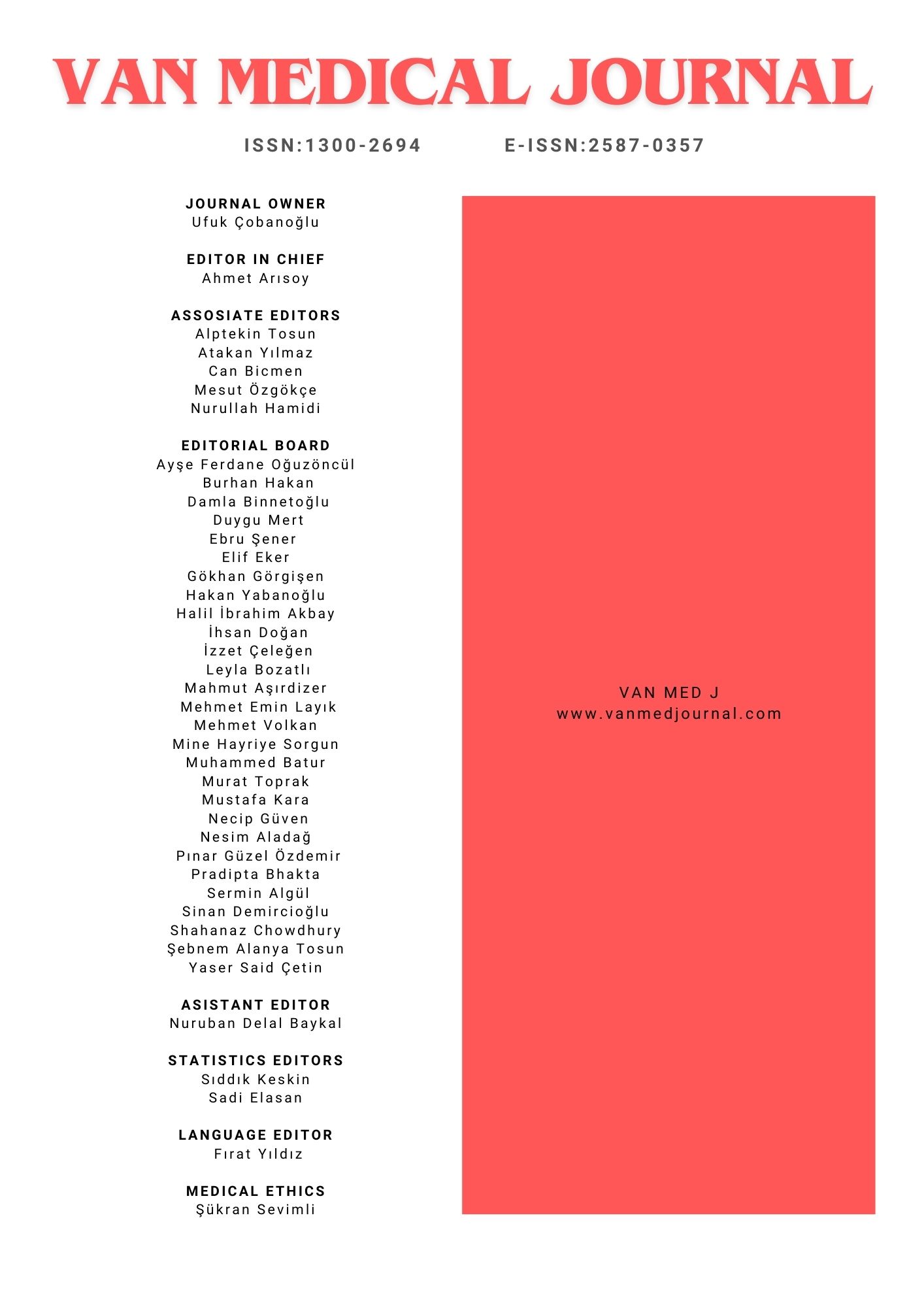An investigation of the effects of diclofenac sodium applied to pregnant rats on postnatal uterus: A stereological study.
Şehri Karakoç, Neşe Çölçimen, Murat Çetin RağbetliDepartment of Histology and Embryology, Yüzüncü Yıl University Faculty of Medicine, Van, TurkeyINTRODUCTION: Nonsteroidal antiinflammatory drugs (NSAIDs) are a group of drugs that have analgesic, antipyretic and anti-inflammatory effects. Due to these properties, are also used in pregnancy. Diclofenac Sodium from this group of drugs was applied to pregnant rats and it was planned to investigate the effect of postnatal pups on the uterus by stereological methods.
METHODS: Twelve Wistar Albino rats were admitted. Two groups were divided into study and sham. From the fifth day of gestation, every day for 15 days study group applied 1 mg/kg Diclofenac sodium and sham group the same amount of physiological saline. At postnatal week 4 the uterus of the pups was dissected and routine histological follow-up methods were applied. Sections were taken 5μm thick. Tissues stained with Masson's Trichrome. In the stereological measurement, was evaluated using the modified method of the Cavalieri principle. The total tissue volume ratios were assessed using the dotted area scale given in the Shetereom 1.5 version package program.
RESULTS: When the volumes of the uterine epithelium and serosa layers of the study and sham groups were compared, it was found that the study group had a statistically significant decrease compared to the sham group(P<0.05).
DISCUSSION AND CONCLUSION: We found that rats given NSAIDs during pregnancy caused changes in endometrium in their offspring. It is suggested that more careful selection of these group drugs should be preferred in intrauterine period.
Gebe Sıçanlara Uygulanan Diklofenak Sodyumun Postnatal Uterus Üzerine Etkilerinin Araştırılması: Stereolojik Bir Çalışma
Şehri Karakoç, Neşe Çölçimen, Murat Çetin RağbetliYüzüncü Yıl Üniversitesi Tıp Fakültesi, Histoloji ve Embriyoloji Ana Bilim Dalı, VanGİRİŞ ve AMAÇ: Nonsteroidal Antiinflamatuvar ilaç (NSAİİ)’ların analjezik, antipiretik ve antiinflamatuar özellikleri mevcuttur. Bu özelliklerinden dolayı gebelikte de kullanılmaktadırlar. Biz de çalışmamızda gebe sıçanlara bu ilaç grubundan olan Diklofenak Sodyum’u uygulayarak, postnatal dönemde yavru sıçanların uterusu üzerinde oluşturduğu etkileri stereolojik yöntemlerle araştırmayı planladık.
YÖNTEM ve GEREÇLER: 12 adet Wistar Albino sıçan alındı. Çalışma ve sham olmak üzere 2 gruba ayrıldı, gebeliğin beşinci gününden itibaren, 15 gün süreyle her gün çalışma grubuna 1mg/kg Diklofenak Sodyum ve sham grubuna da aynı miktarda serum fizyolojik uygulandı. Postnatal dördüncü haftada anestezi altında yavru sıçanların uterusu disseke edildi ve rutin histolojik takip metodları uygulandı. 5μm kalınlığında kesitler alındı. Masson Trikrom boyası ile boyandı. Stereolojik ölçümde, Cavalieri prensibinin modifiye metodu kullanıldı. Total doku volüm oranları, Shetereom 1.5 version paket programında verilmiş noktalı alan cetveliyle değerlendirildi.
BULGULAR: Grupların uterus epitel ve seroza tabakalarının volümleri karşılaştırıldığında, çalışma grubunda sham grubuna göre azaldığı ve istatistikî açıdan anlamlı bulunduğu tespit edildi (P<0.05).
TARTIŞMA ve SONUÇ: Gebeliklerinde NSAİİ verilen sıçanların yavrularında endometriumda değişikliklere yol açtığı tesbit edildi. Bu sonuç bize bu grup ilaçların intrauterin dönemde tercih edilmesini gerektiren durumların daha özenli seçilmesi gerekliliğini gösterdi.
Corresponding Author: Neşe Çölçimen, Türkiye
Manuscript Language: Turkish

